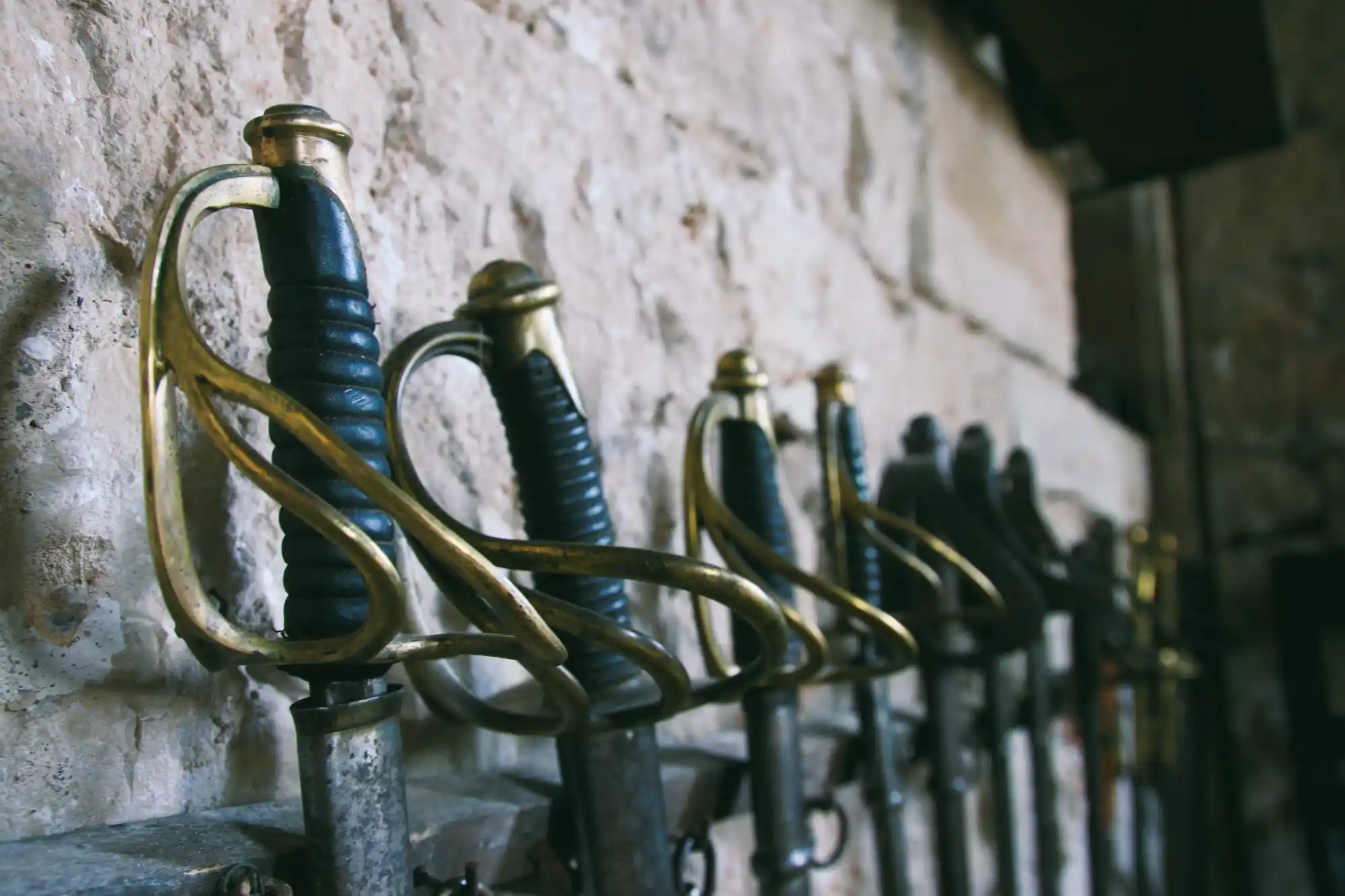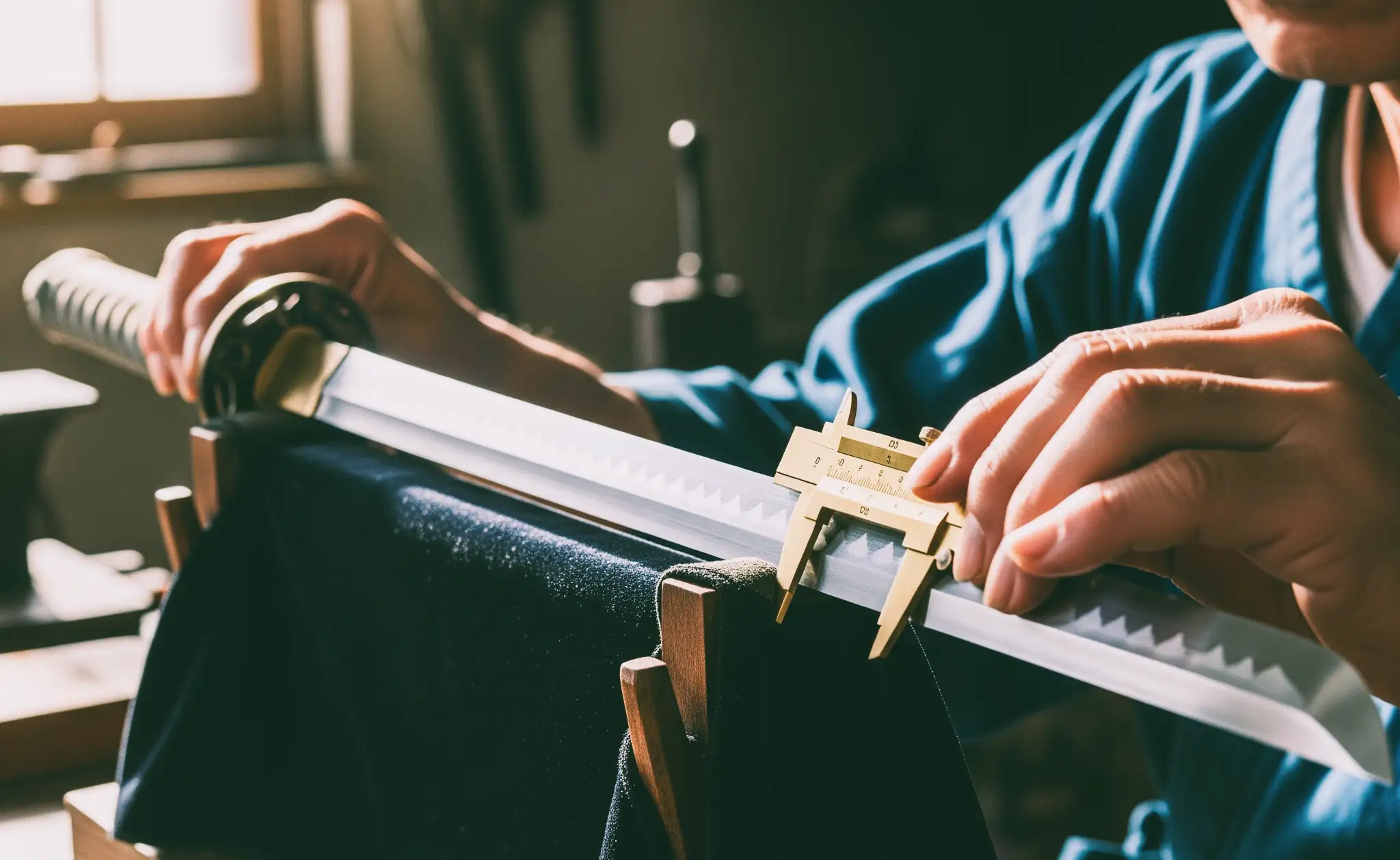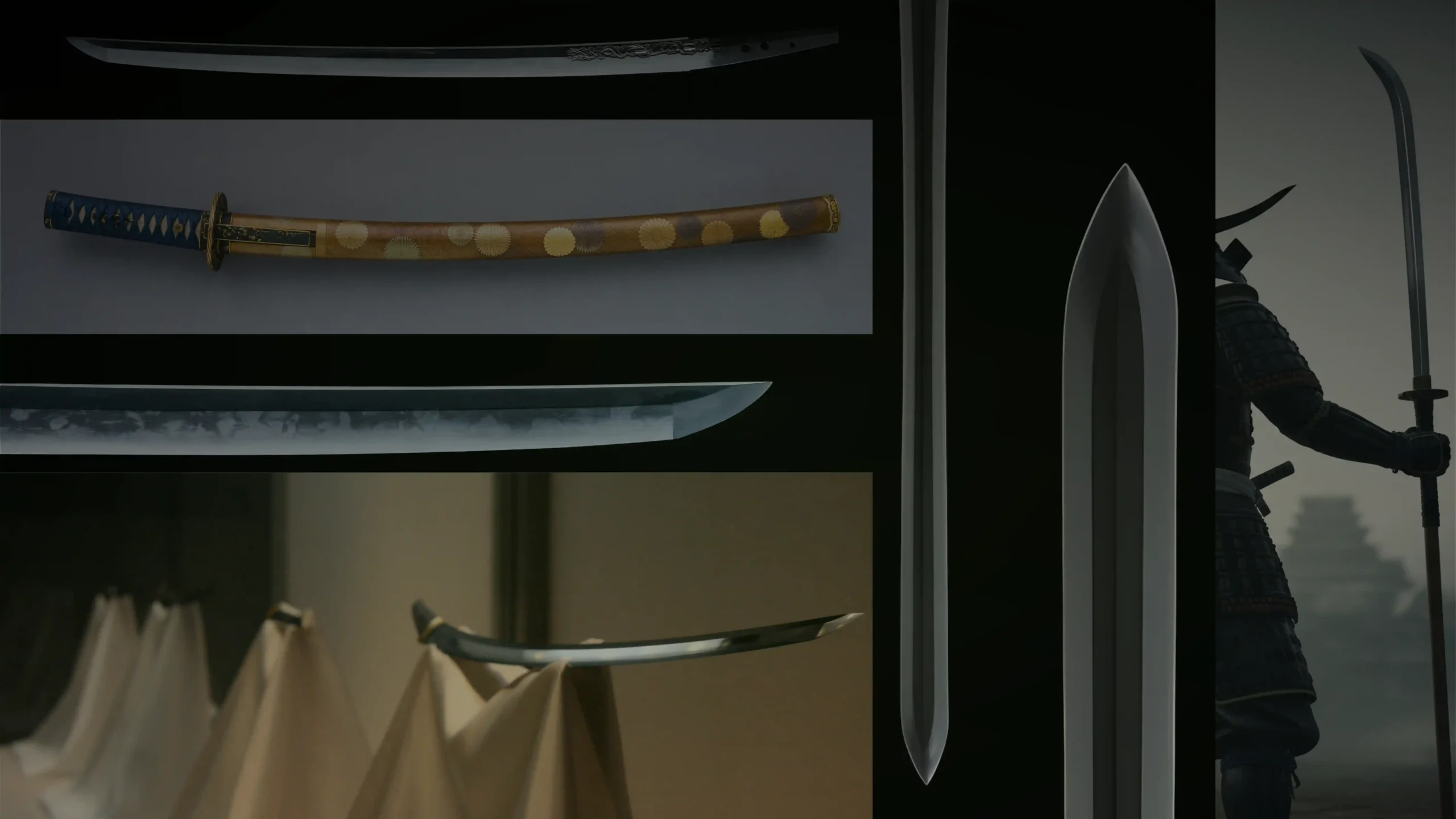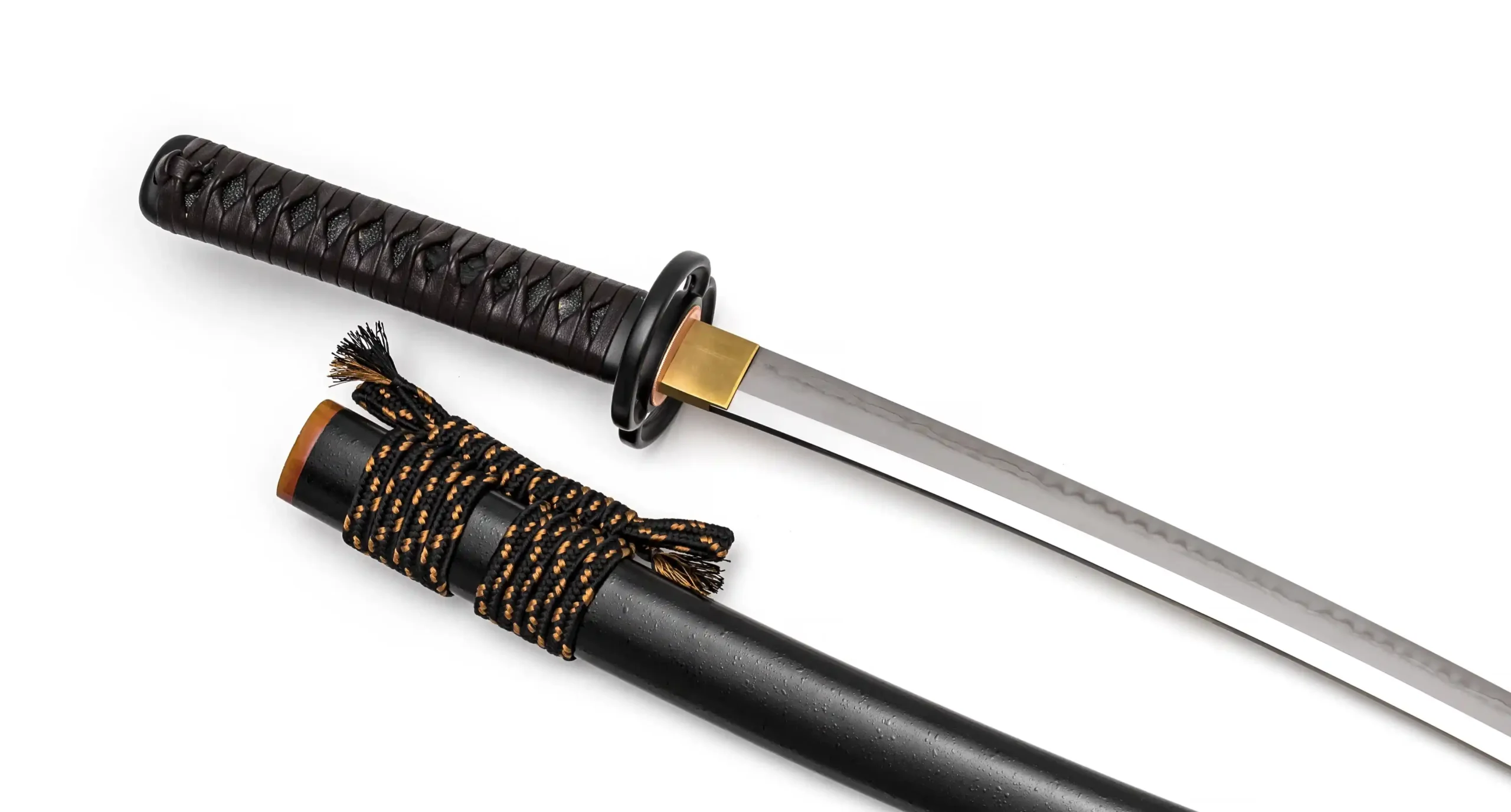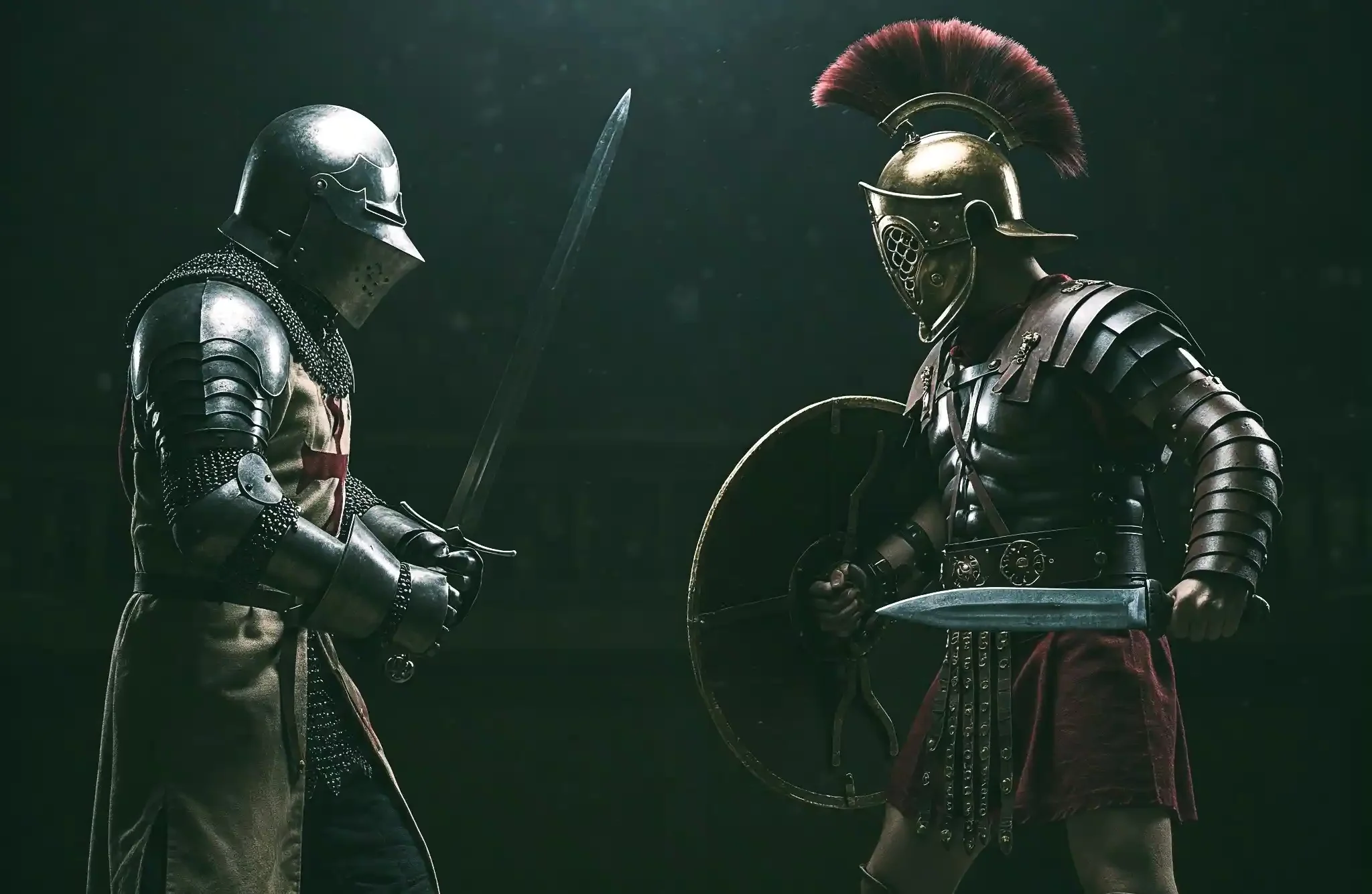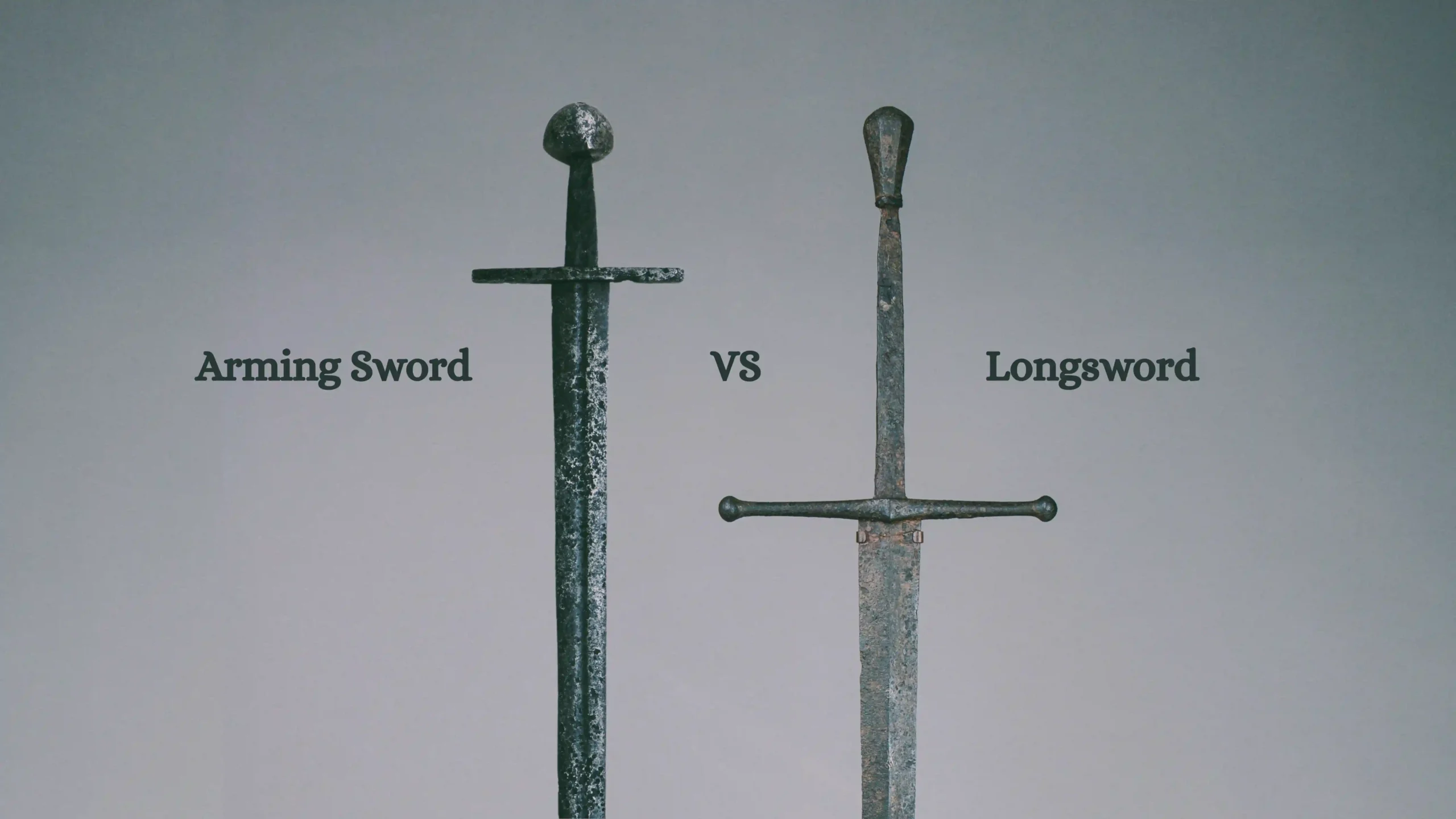We may earn revenue from the products available on this page and participate in affiliate programs. Learn more >
If you are a sword enthusiast, you’ve probably heard about the Claymore, one of the most iconic weapons in the world. This mighty Scottish blade, known for its impressive size and distinctive double crossguard, has not only dominated battlefields but also captured the imaginations of collectors and historians alike. Steeped in legend and history, the Claymore is more than a mere weapon; it’s a symbol of the fierce spirit and martial prowess of the Highland warriors. In this article, we’ll explore the rich heritage of this sword, its evolution through the ages, and its lasting impact on swordsmanship and culture.
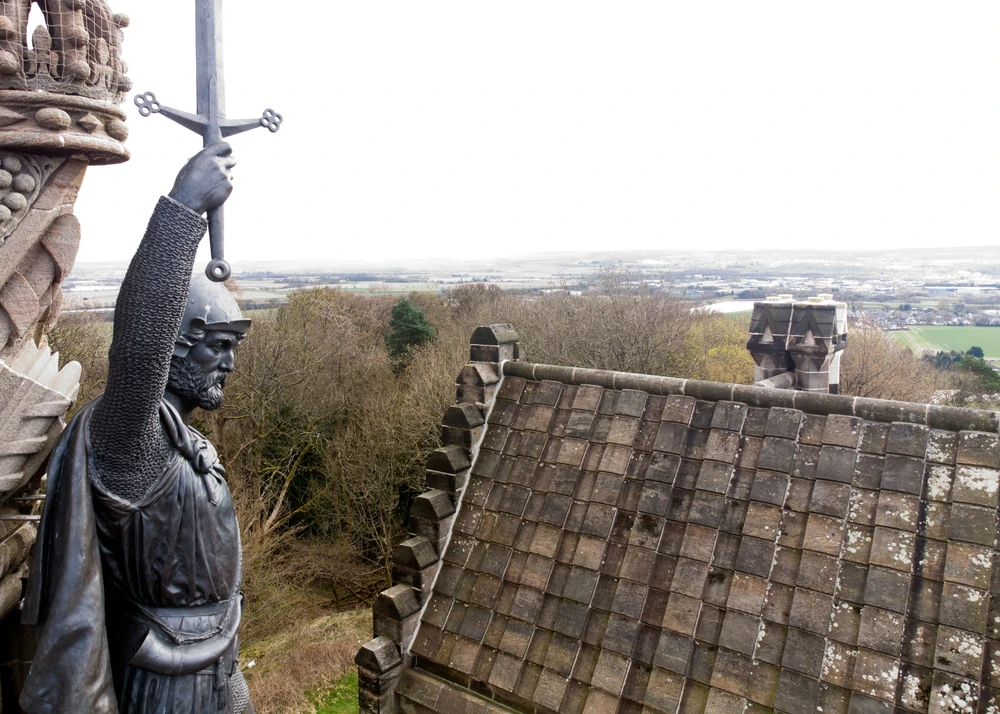
What is a Claymore Sword?
A Claymore is a large Scottish two-handed sword characterized by its distinctive cross hilt with forward-angled arms and a large, double-edged blade. This is the description we all know, but from the research we have done, the claymore was also referred to as a basket-hilt sword, introduced in the 16th century, featuring a basket-shaped guard that offers more hand protection.
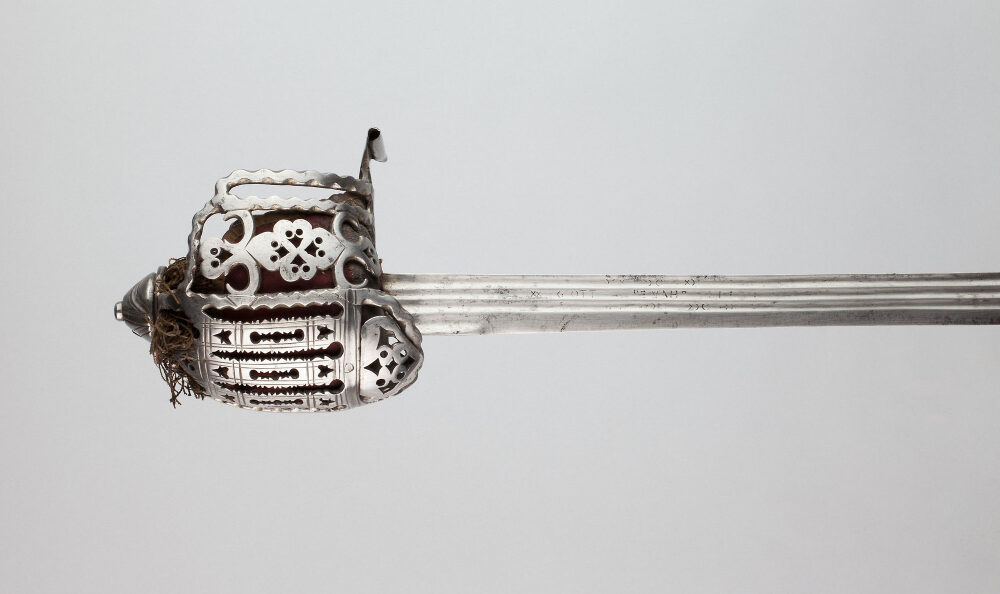
Although both designs are commonly recognized under the “claymore” label, some purists argue that the true claymore is the earlier, cross-hilted type. When discussing these iconic swords, clarity is key, and it is beneficial to specify whether referring to the traditional late medieval two-handed sword or the later basket-hilted broadsword, each bearing its unique historical and functional significance.
| Name | Claymore |
|---|---|
| Origin | Scottish Highlands |
| Era | 15th – 17th Centuries |
| Blade | Double-edged, broadsword |
| Use | Infantry combat, Highland warfare |
Historical context
The Claymore is more than just a weapon; it is a profound symbol of Scottish identity, reflecting the nation’s enduring spirit and valor in battle. Its usage spanned significant periods, notably from the 15th to the 17th centuries, during which it was essential in clan warfare and conflicts with England. Its design and size made it particularly effective against armored opponents, showcasing its prominence in the fierce Highland Charge, a tactical assault that became iconic in Scottish military history.

Ownership of a Claymore also denoted a warrior’s social standing, often becoming a treasured family heirloom passed down through generations, thus cementing its role in Scottish culture. This sword has been immortalized in numerous historical accounts and remains associated with key figures and battles, such as the legendary William Wallace and the Battle of Killiecrankie, underlining its significance not just as a weapon of war but as an enduring icon of Scottish resilience and pride.
Physical Characteristics
The Claymore is renowned not only for its historical significance but also for its distinctive physical features, which are crucial to understanding its functionality and use in battle.

Size and Length: Typically features a large blade measuring approximately 55 inches in total length, with the blade alone often extending up to 42 inches. This significant length enhances the sword’s reach in combat, allowing the wielder to engage opponents from a safer distance. The substantial size necessitates the use of two hands, which facilitates a more powerful swing and greater control during strikes.
Weight: A typical Claymore weighs about 5 to 6 pounds, which is relatively heavy compared to other types of swords. This weight is pivotal for delivering forceful blows that could penetrate armor or inflict significant damage with each strike.
Components:
- Blade: The blade is broad and double-edged, designed for slashing and chopping motions.
- Hilt: The hilt includes a grip long enough to accommodate two hands for increased leverage and control.
- Guard: The distinctive crossguard helps protect the hands from enemy strikes, typically featuring forward-sloping quillons that may end in decorative quatrefoils.
- Pommel: The pommel at the base of the hilt serves as a counterweight to the blade, which helps balance the sword and maintain maneuverability.
Types of Claymore Swords
There are different variations of this iconic weapon, each distinguished not just by physical characteristics but also by regional and historical contexts. Understanding these differences and similarities is crucial for enthusiasts and historians alike.
Basket-Hilted Claymore
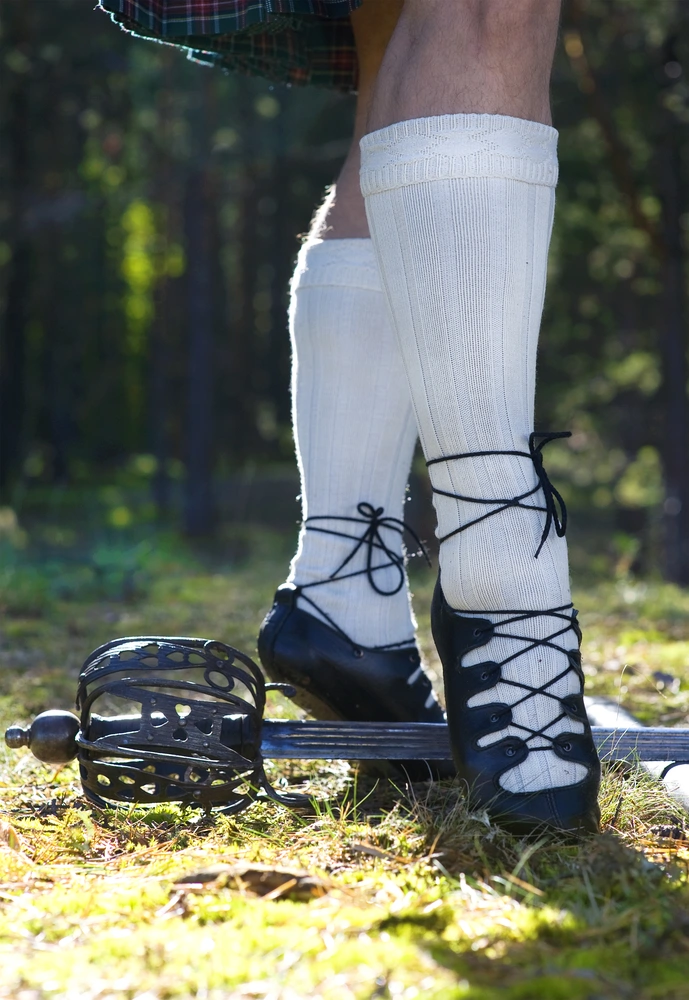
Emerging in the 16th century, the basket-hilted claymore reflects the evolution in sword design responding to changes in military tactics and armor. Unlike its earlier counterpart, this version includes a basket-shaped guard that encloses the hand, offering enhanced protection.
Characteristics
- Basket hilt: Intricately designed, typically made of steel wires or plates, protecting the wielder’s hand from enemy blows.
- Slightly shorter blade: Compared to the earlier claymores, these swords have a shorter blade, making them more manageable in close combat.
- Broad blade with a sharp point: Remains versatile for slashing and piercing, adapting to the reduced use of heavy armor.
Claymore with Clamshell Guard
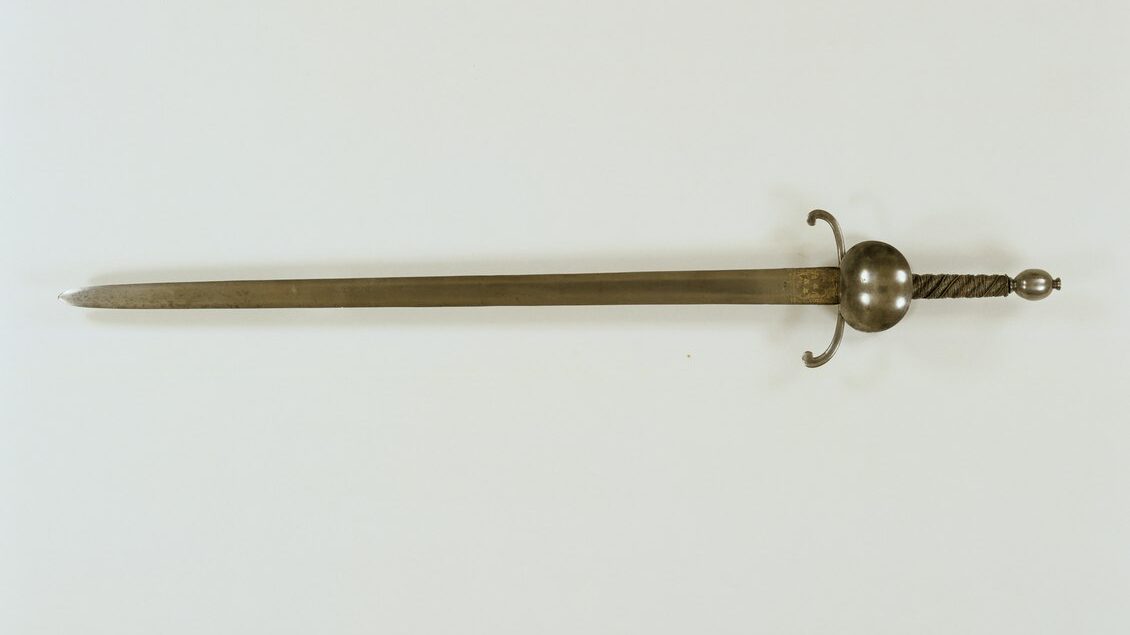
This variant of the basket-hilted claymore includes what’s known as a clamshell guard. These began to appear more frequently in the late 16th and early 17th centuries. The design is particularly notable for its enhanced hand protection and its distinctive aesthetic flair.
Characteristics:
- Clamshell Guard: The guard features large, rounded plates that resemble clamshells. These plates are usually positioned to protect the back of the hand. This design not only offers superior protection but also adds a decorative element to the sword.
- Enclosed Basket: The rest of the hand is protected by a basket made from interconnected bars or plates of metal. This intricate design could be quite ornate, featuring patterns, piercings, or even inscriptions.
- Manageable Blade: The blade of this type of claymore is shorter than the massive two-handed great claymores, typically around 30 to 33 inches. It’s still double-edged, tapering to a sharp point, which makes it effective for both cutting and thrusting in battle.
The clamshell design added a practical and artistic touch to the basket-hilted swords, showing off the craftsmanship of the sword makers of the time. These swords were not just tools of war; they were also symbols of status and personal style. If you’re incorporating a section on the clamshell claymore in your article, highlighting these aspects could really enrich the narrative and showcase the depth of sword-making artistry in Scottish history!
Highland Claymore Sword

The Highland Claymore is a type of Scottish Claymore specifically associated with the Scottish Highlands. This sword often features more elaborate decorative elements, reflecting the rich cultural heritage of the Highland clans. The design of the Highland Claymore includes a more pronounced crossguard and sometimes a heavier blade, making it distinct within the broader category of Scottish swords.
Scottish Lowland sword
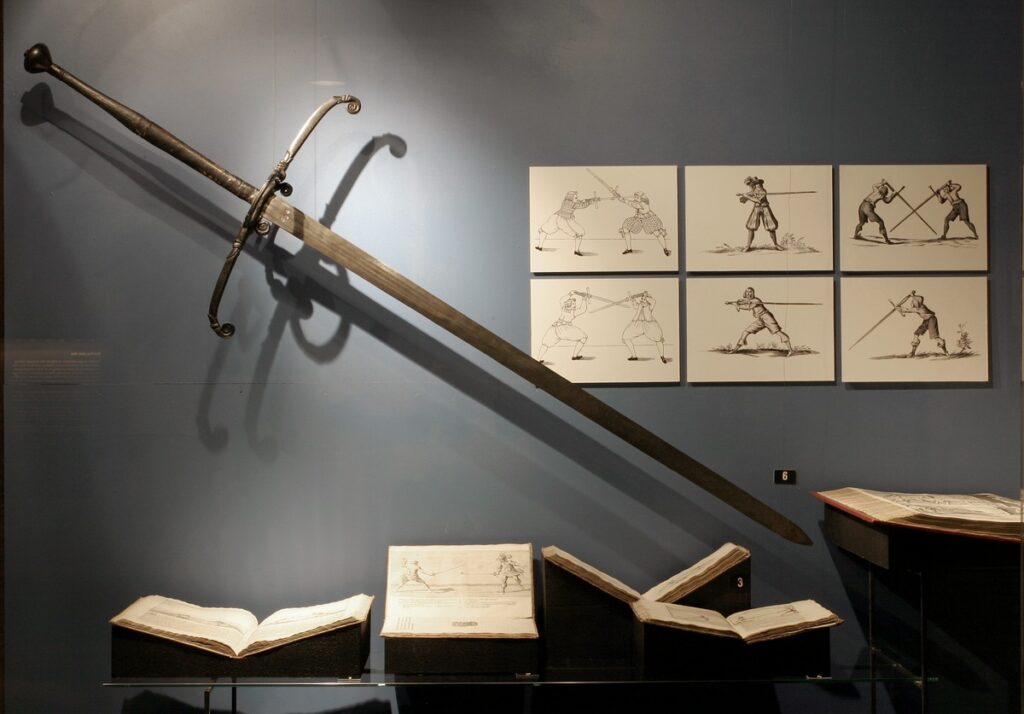
While not traditionally called a claymore, the Lowland Scottish shares some design elements with the Highland Basket-Hilted Claymore but often features a simpler, more utilitarian design. These swords were used during the same periods, particularly from the 17th century onwards.
Characteristics:
- Simpler Basket Hilt: Unlike the often highly ornate Highland basket-hilted swords, the Lowland versions tended to have more straightforward, less decorative hilts.
- Blade: The blade of a Lowland broadsword is typically double-edged and tapered, suitable for both cutting and thrusting. This design reflects the military and dueling needs of the Lowlands, which were influenced by both Scottish and European swordsmanship traditions.
- Size and Handling: These swords are generally of a manageable length, balancing the need for a weapon suitable for close combat and the practicalities of everyday carry, especially in more urbanized or populated areas.
- Material and Craftsmanship: The Lowland swords often utilized high-quality steel, with a focus on durability and balance. The craftsmanship was practical, prioritizing the sword’s effectiveness and reliability over extensive decoration.
- Use: In the Lowlands, such swords were more likely to be used by town guards, officers, and civilians. They were practical weapons for personal defense and law enforcement within the more densely populated and socially diverse Lowland areas.
Claymore Sword Today
This revered Scottish weapon continues to fascinate those interested in both historical and modern martial arts, playing a significant role in cultural preservation and education. Here’s how it remains significant in contemporary contexts:
Replicas: For enthusiasts looking to own a piece of history, replicas are available through specialty shops and reputable online retailers. When selecting a replica, important factors to consider include accurate measurements, materials true to the original, and fine craftsmanship.
Training Swords: These are essential in sword training and historical reenactments, providing a realistic yet safe experience. Made from materials like high-density foam or blunt-edged metal, they simulate the handling characteristics of the original weapons without posing the same risks.
Purchasing Tips: Whether aiming to acquire an authentic antique or a sturdy replica, it’s crucial to verify the authenticity and condition of the piece. For antiques, provenance and expert appraisals are indispensable. For replicas, focus on build quality and historical fidelity. Always deal with trusted vendors to avoid counterfeits.
Last words
From medieval battlefields to modern ceremonial roles, this iconic Scottish sword stands as a symbol of heritage and valor. Today, whether used in historical reenactments or displayed as a collectible, it continues to captivate enthusiasts worldwide, embodying a legacy that transcends time. This enduring symbol serves as a testament to the spirit and determination of Scotland, inspiring admiration and respect across generations.


